Backstage with the Liberty Bell Drama Company
Spring 2019
by Ashley Lodato
Education Director, Methow Arts
Just imagine that you’re a high school drama class teacher in the tiny Methow Valley and you want to produce the musical “Chicago.” Your school is located in what many people would consider the middle of nowhere. Your class size is 30. The theater you’ll be performing in seats 150. And yet you can’t secure the rights to produce “Chicago” because a national theater company will be touring with the play that same year, and the production company is worried that your play will draw audiences away from the bigger venues, such as Spokane’s Modern Theater and the 1169-seat Pantages Theater in Tacoma.
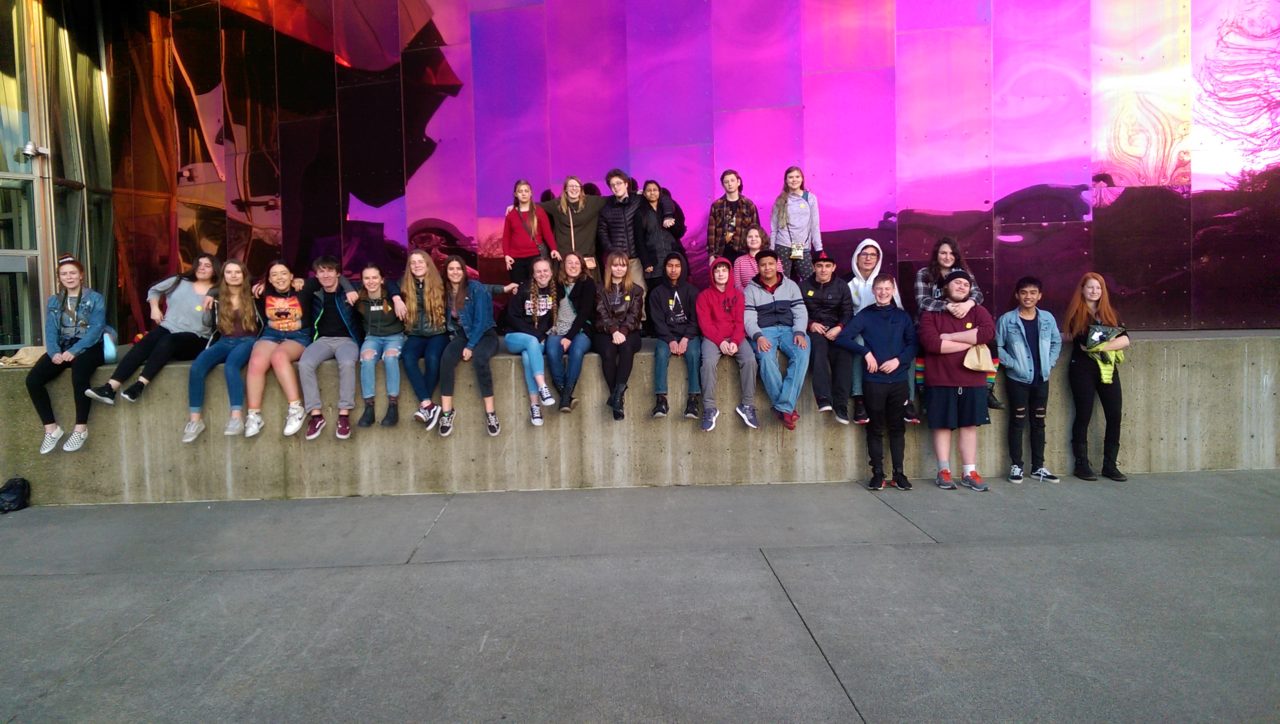
Although those familiar with the reach of high school theater—especially in places as remote as the Methow Valley—might chuckle at such a concern, anyone who has actually seen one of the Liberty Bell Drama Company’s productions will understand why a national touring company might feel threatened. Belying its small size and homegrown roots, the Liberty Bell Drama Company (LBDC) has a tremendous impact, on company members and audiences alike.
Formed in early 2014, following a gap in school district drama class offerings after the retirement of long-time drama teacher Jane Orme, the LBDC is a Liberty Bell High School class “designed to allow students to become an active part of interpreting the human condition.” Contextually, it integrates into the International Baccalaureate global frameworks relating to personal & cultural expression and identities & relationships. Students help “create, perform, and critically respond to various forms of theatrical performances [as well as] learning vocabulary and techniques related to writing, directing, staging, and performing in plays and musicals.”
Built on the theater arts foundation laid by Orme and constructed with the quirky, edgy aesthetic and collaborative spirit of former Chumbawamba punk rocker Danbert Nobacon, the LBDC took flight quickly, producing two original “plays with music” (as opposed to full-scale musicals) in its first two years. When English teacher Kelly Grayum—who had little prior drama experience but turned out to have an instinctive knack for both acting and directing—joined the LBDC in 2016 (enabling the program to become a credit-earning arts elective as opposed to an afterschool activity) the program soared.
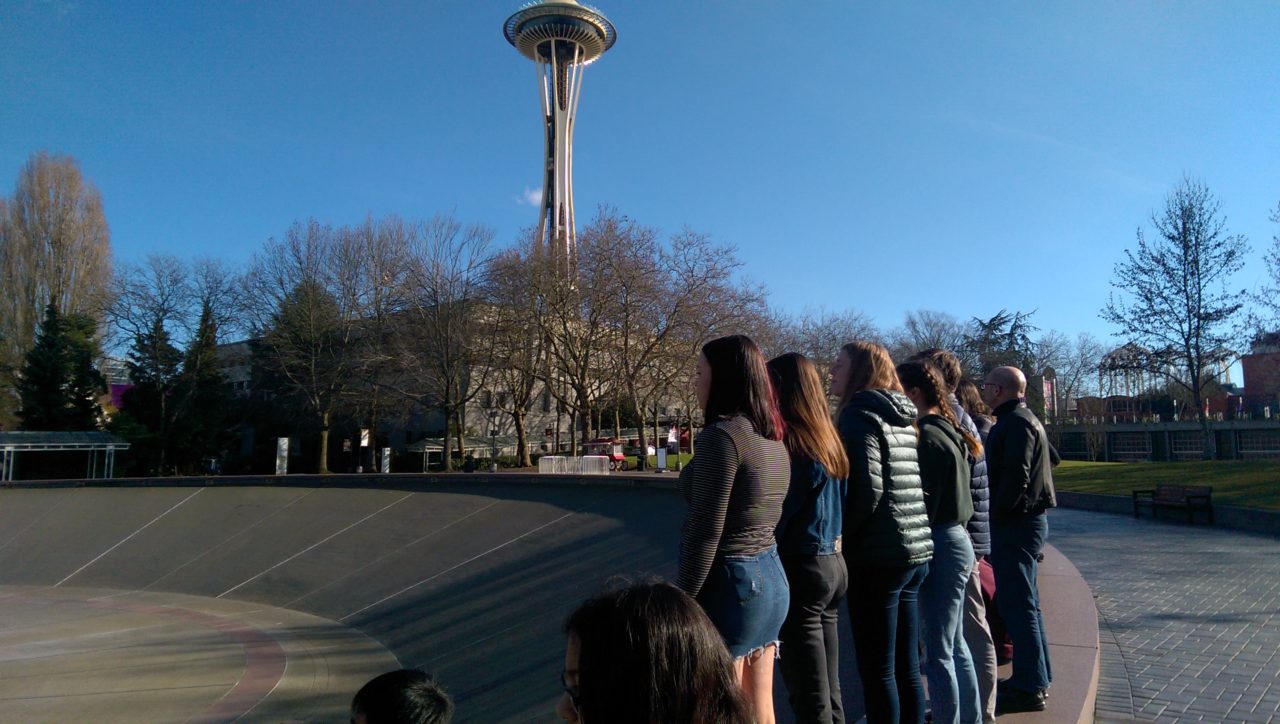
Grayum subscribed to the cooperative environment Nobacon had cultivated with the LBDC. The heart of putting on a play, says Nobacon “is a collaborative community process involving many moving parts.” Under Grayum and Nobacon’s leadership, the LBDC has always selected and produced plays as a team. The teachers offer suggestions for play choices and solicit students’ recommendations as well. The LBDC members then select the plays consensually, based on student preference and logistical considerations.
“Every year we have a different demographic of students in the class, which also changes with each semester, so this heavily influences the plays we can choose,” says Nobacon. “While not all the students act on stage (as some are involved in tech and backstage duties) that is still a lot of students to find acting roles for and many plays we might want to do simply don’t have enough roles for the size of our class, or are too male heavy, or female heavy, which is the opposite of our particular class demographic. Even when we do find a suitable play, role-wise,—in the great tradition of theatre— we might often have some students playing the opposite of the gender roles specified in the script.”
Grayum and Nobacon look for plays that have “appropriate content for the inquiring minds of teenagers.” For Grayum and Nobacon this doesn’t mean sourcing G-rated content, but instead finding “themes that are challenging for students, but which ask questions about the world we are living in.” They’re seeking relevancy. Says Nobacon, “This has proven to be a way of keeping students engaged and invested in the plays we end up picking, rather than if we did something that was purely for entertainment purpose or ‘fluff,’ as it is known in the trade, which would be patronizing towards our students’ curiosity and abilities.”
Given the relatively limited rehearsal times (about 3.5 hours each school week), it’s impressive that the LBDC is even able to stage full-length plays and musicals. Add in the fact that every single one the LBDC students are involved in other extracurricular activities (sports, Poetry Out Loud, National History Day, Knowledge Bowl, dance, music, 4H, cheerleading, jobs), the quality of the productions is downright remarkable. After the LBDC’s fall production, one parent was overheard leaving the theater saying “That was enjoyable even if you didn’t have a kid in it!” Is there any better vindication of high school theater?
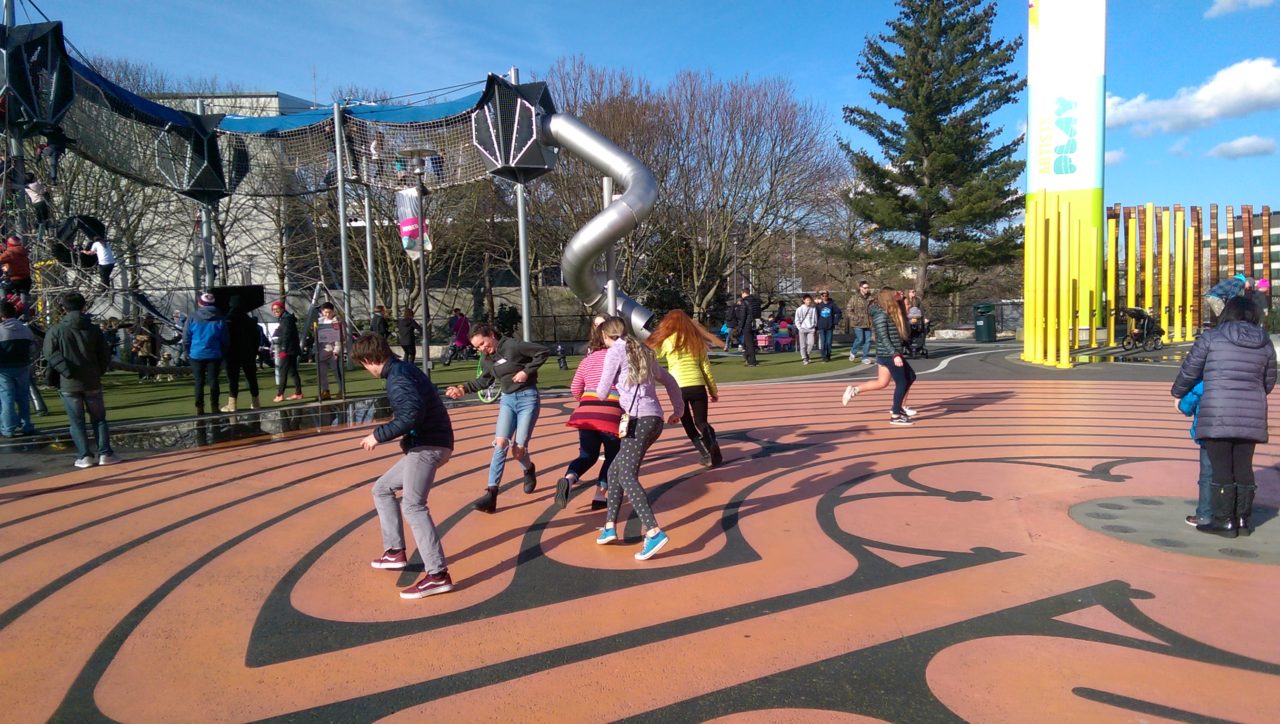
For the past four years, students have sought overwhelmingly to produce musicals. Nobacon acknowledges that musicals involve far more work than a typical dramatic play. In addition to acting, there’s singing and dancing! “It does sometimes seem like a miracle that we do pull it off, especially given the other constraints on students’ time,” says Nobacon. “Putting on a play especially in the final two weeks up to and including when we go on stage involves a lot of outside of school hours. Although we try to avoid it, it does often happen that we do not get the all the cast, all in the same place at one time to run through all of the play, until the final rehearsals in the Merc Playhouse a day or two before opening night. I think it is testament to what is sometimes called ‘the magic of theatre’ that as we get closer to opening night, a bonding process happens where everyone pretty much pulls together to make it happen.”
Educationally, say Grayum and Nobacon, participating in theater arts “goes far beyond what can be achieved in a classroom setting.” They continue, “Putting on a play really does cover all the bases of social learning by doing. For the students to see the glow that comes from the feelings of forming a community that pulled it off and coming off stage and knowing ‘we did this—we came together and made art and stood up in front of the public and did it’— is truly a wonderful thing.”
As someone who has made a career from the performing arts, Nobacon well knows how being involved in live theater can be life-changing. “Some of our [LBCD alumni] have gone on to be performers in their adult lives—both in community theater and professional settings—and all of our students take with them social, collaboration, and community-forming skills they may not otherwise learn in high school.”
To facilitate other experiences that enhance arts learning, Grayum and Nobacon have cultivated relationships with individuals and organizations that can help them further their mission of keeping theater alive for high school students. The Merc Playhouse collaborates with the LBDC to get more teens into the Merc to see live theater and to participate in Merc productions as cast and crew. The Merc also brings a handful of Seattle University productions to Twisp and coordinates student field trips to see these plays, which are frequently Shakespeare and other classics. Through a relationship with former Merc Artistic Director and Seattle University theater professor Ki Gottberg, Seattle University’s Theatre Department hosts students for an annual tour of the department, “giving students a chance to see college students who are only a few years older than them, involved in very high-level productions,” says Nobacon. “We have also been given tours of theater facilities in Capitol Hill and been guided by technicians who make a very good living from working in theater.”
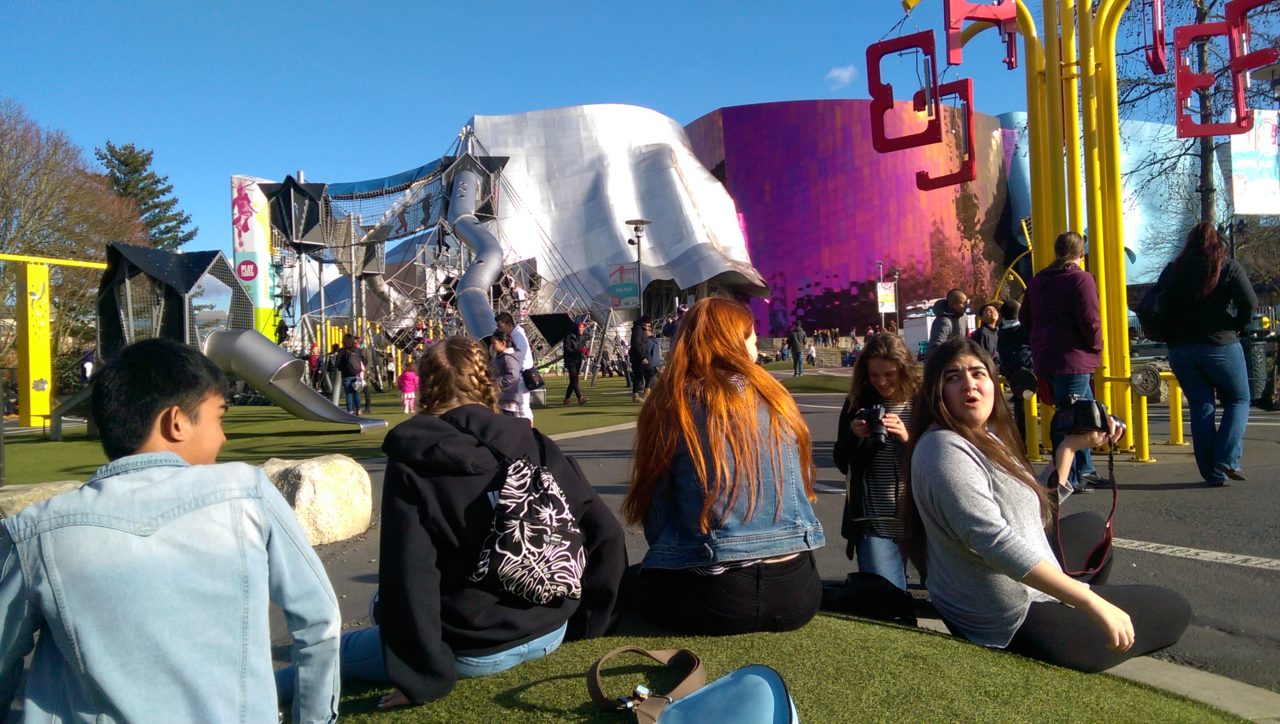
The Seattle University experience is just one component of the LBDC urban culture trip to Seattle, which is supported by Methow Arts. Despite the relatively brief 36-hour duration of the trip, the group participates in myriad arts experiences, beginning with a trip to Seattle’s MoPop (Museum of Pop Culture), whose mission is “making creative expression a life-changing force.” At MoPop, students explored the worlds of punk and grunge rock, science fiction, and fantasy, experimented in the Sound Lab, and visited the touring Marvel Comics Universe of Superheroes exhibit. “I think that the kids were honestly in love with MoPop,” Grayum said after the trip.
After MoPop, the students ate dinner at the Seattle Center’s Armory Food Court, in the shadow of the Space Needle and surrounded by public art and the vibrant social culture of an urban setting. Anchoring the trip was an evening at the 5th Avenue Theater’s professional production of the musical “Rock of Ages.” The students were, says Grayum, “generally blown away by ‘Rock of Ages.’ It was an absolutely spectacular show.”
After a slumber party on the gym floor at the Bush School, the students ate breakfast at the Seattle University cafeteria and then toured the Theatre Department, which was excellent, says Grayum. “They got to hear from a current student working on their production and see the set.” A visit to the Frye Museum capped the trip, says Grayum, and “was totally weird and interesting,” as it included a performance art event (Ditch, running through late April) in a gallery setting.
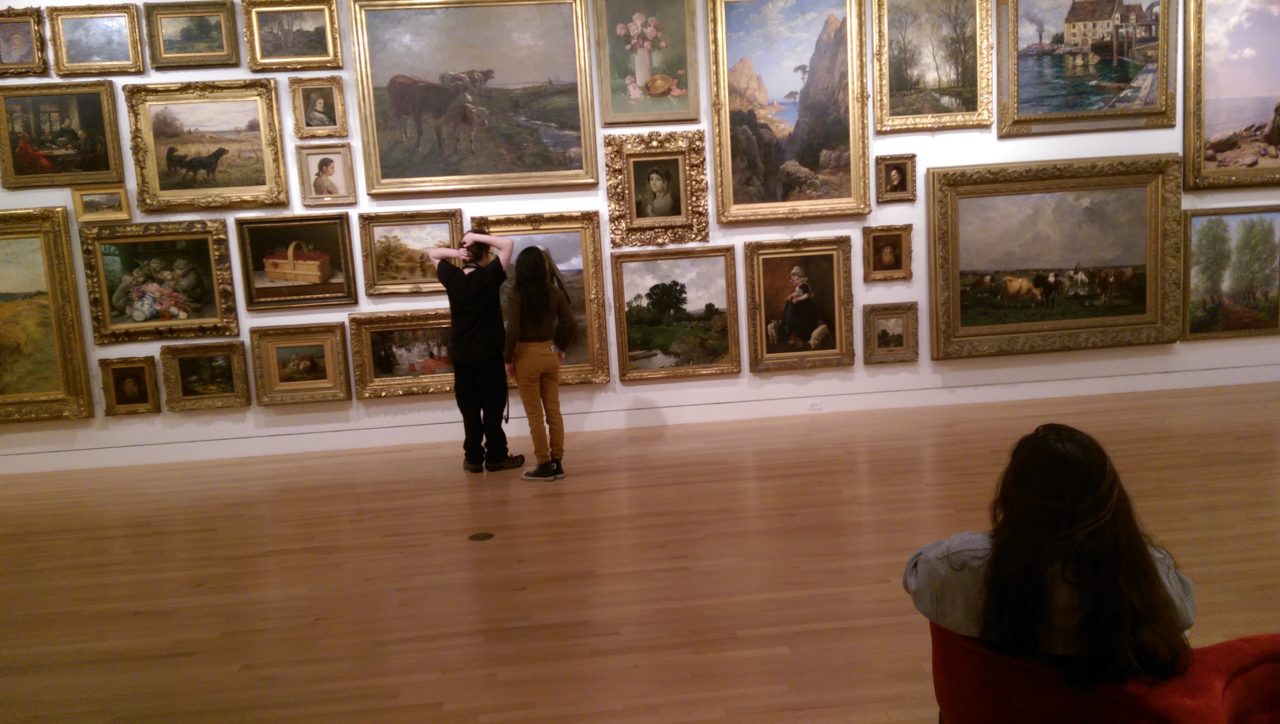
The urban culture trip, says Nobacon, “is a means of giving students the chance to see that live theater is alive and well, that it is a thoroughly worthwhile endeavor for all involved, including the essential role and audience plays in making a play a success.” For those who are really interested, Nobacon says, the trips shows students that “this is something that can be pursued in college and as a vocation in working life. Seattle is in the top five cities in the US for the theater arts, and our students get to see what is possible in the wider world of theatre arts.
Grayum adds, “For many of our students who are not even used to going to Seattle (and on some trips there are students for whom this trip is their first trip to Seattle), getting to see the world of the arts in a vibrant city is a wonderful way of broadening their horizons, of seeing what is possible in the world out beyond the valley. I think it can be a real game changer for a lot of students who wouldn’t normally get this kind of experience with their families.”
And true to the spirit of collaboration coupled with an understanding of how much it truly takes a village to foster and sustain a robust performing arts program, Nobacon offers thanks to “Methow Arts, The Merc Playhouse, and Seattle University Theatre Department for helping the LBDC [fulfill its mission], along with all the peers, parents, and friends who come and see our shows and be part of the live theater experience.”
Click here for more information about the Liberty Bell Drama Company’s spring production of “Chicago.”
This program is sponsored in part by Methow Arts Alliance’ Okanogan Region Arts Education Partnership. The partnership serves over 5,200 students and 380 teachers across greater Okanogan County with arts programs in classrooms in the Brewster, Methow, Okanogan, Omak and Pateros School Districts, and in the Paschal Sherman Indian School on the Colville Reservation.
INFO: Methow Arts Alliance, 509.997.4004, info@methowartsalliance.org